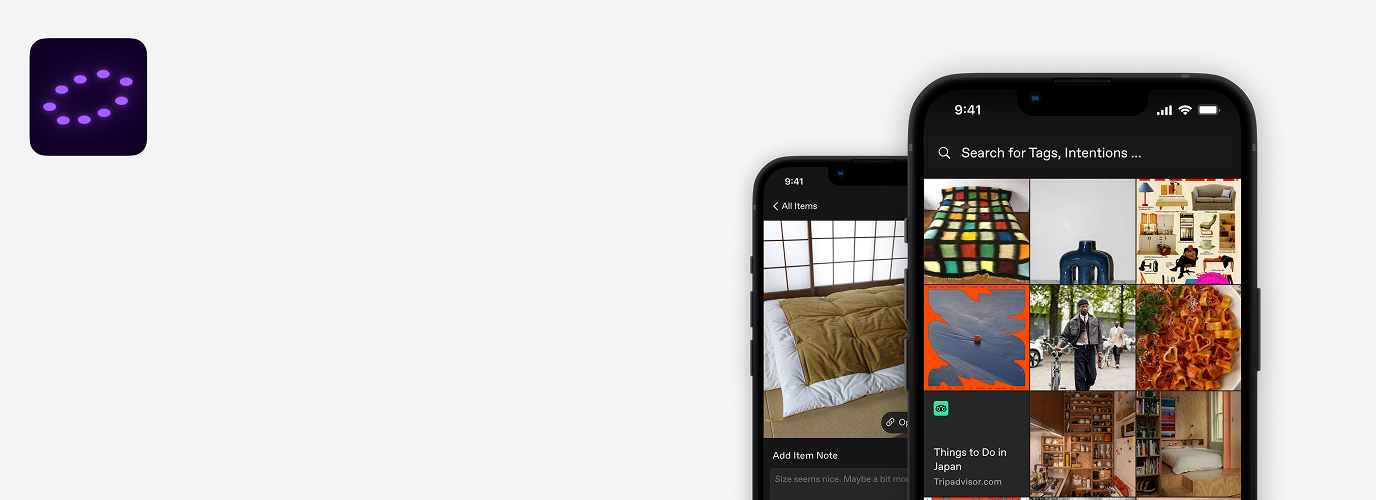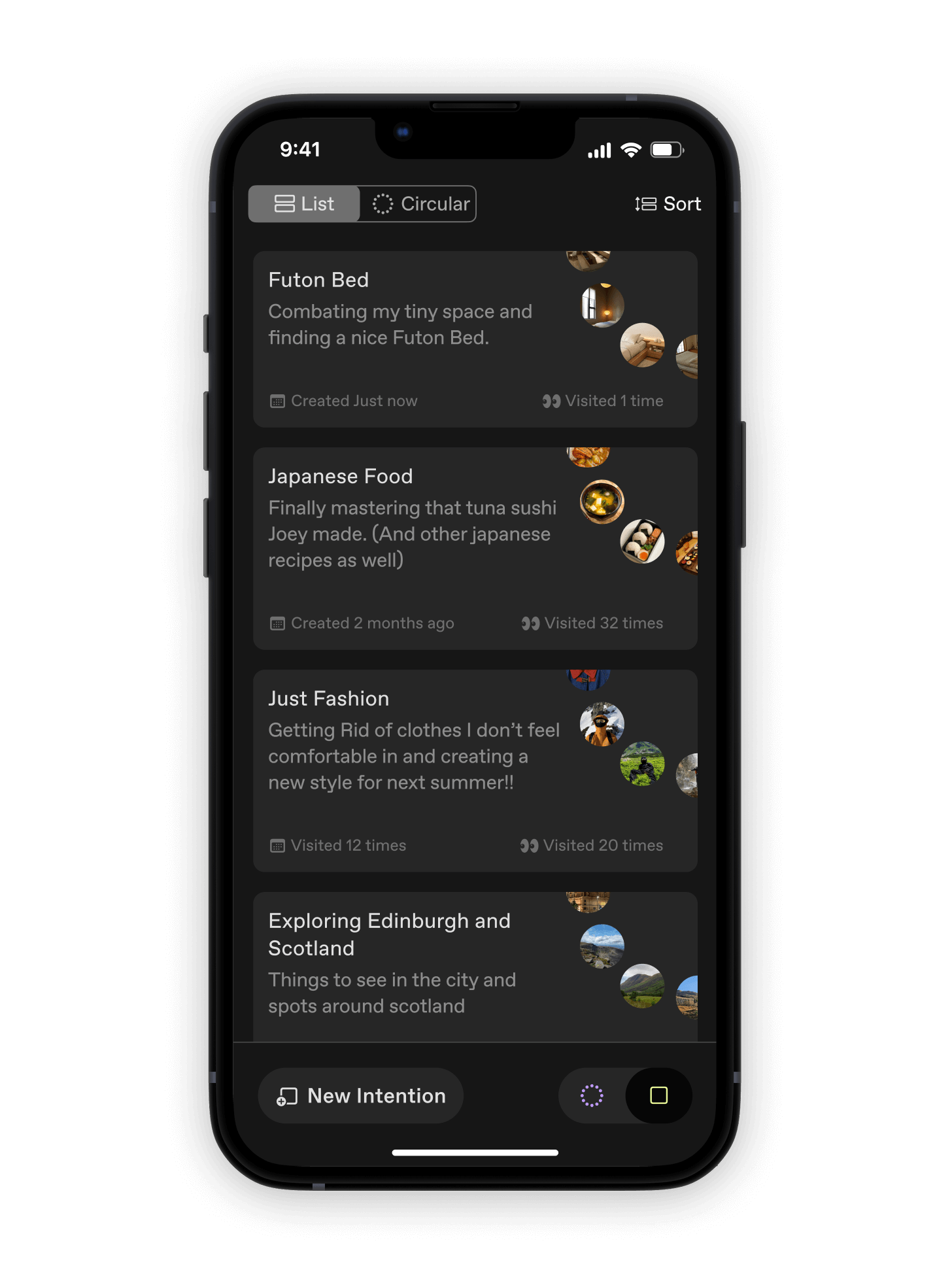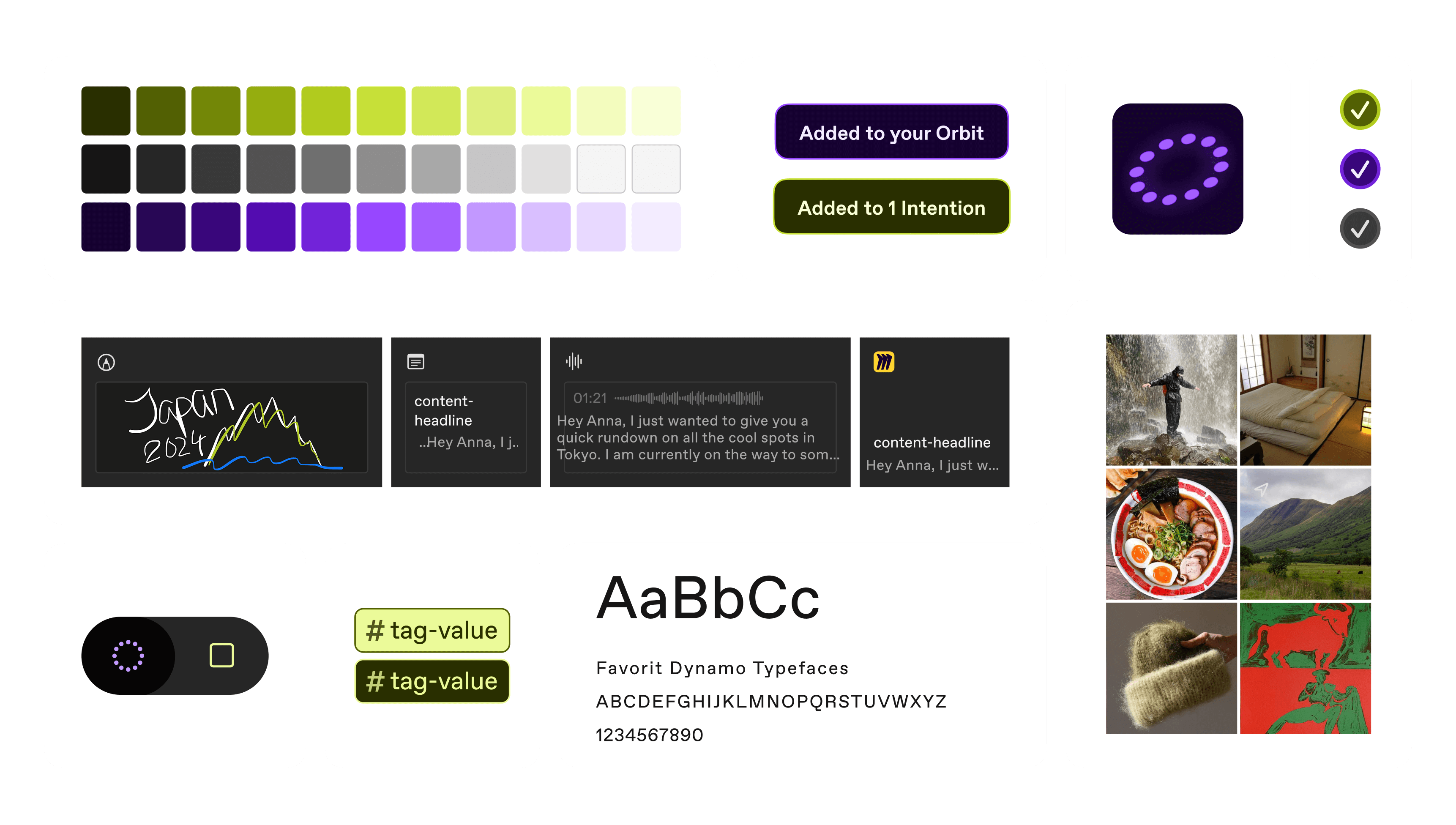


Participants
Q1 2024
One Orbit to collect and find them all!
Every day, we come across ideas, inspirations, and memories that we try to save, organize, and share. However, traditional folder systems can no longer keep up with the variety of analog and digital media, numerous platforms, and different file formats. They are either too generic, failing to reflect the individuality of their content, or too specific, making it easy to lose track.
Our goal was to create a system with a single storage location that also gives users the confidence to efficiently rediscover their saved content.

Approach
Through extensive brainstorming, we explored how digital and analog content is currently saved and organized, identifying the fragmentation of storage as a core issue. Inspired by tools like Spotlight and Obsidian, we envisioned a cross-platform space — the Orbit — that brings everything together.
Using the Jobs To Be Done framework, we analyzed the motivations and struggles of two opposing personas: the chaotic content saver and the hyper-organizer. This helped us shape clear user goals and sparked valuable discussions about features and UX priorities, ultimately leading to a refined user story map and functionality roadmap.
After early experiments in Figma, we shifted to paper prototyping to focus on structure and flow. We then developed wireframes and gradually evolved them into detailed UI designs. Throughout this phase, we iterated frequently. Rethinking features and refining the coverall concept of the app. In the final phase, we built a cohesive design system grounded in our findings. We ensured that Orbit’s interface supports intuitive navigation, automatic tagging, and purpose-driven clustering — all within a minimal, focused UI. The result: a content-saving app that prioritizes intent over structure and helps users regain clarity in their digital lives.
Using the Jobs To Be Done framework, we analyzed the motivations and struggles of two opposing personas: the chaotic content saver and the hyper-organizer. This helped us shape clear user goals and sparked valuable discussions about features and UX priorities, ultimately leading to a refined user story map and functionality roadmap.
After early experiments in Figma, we shifted to paper prototyping to focus on structure and flow. We then developed wireframes and gradually evolved them into detailed UI designs. Throughout this phase, we iterated frequently. Rethinking features and refining the coverall concept of the app. In the final phase, we built a cohesive design system grounded in our findings. We ensured that Orbit’s interface supports intuitive navigation, automatic tagging, and purpose-driven clustering — all within a minimal, focused UI. The result: a content-saving app that prioritizes intent over structure and helps users regain clarity in their digital lives.
.png)



